Blogging from the R/V Endeavor: May 29-June 21 2015
The ECOGIG research team will be participating in a research expedition on the R/V Endeavor from May 29th 2015- June 21st 2015. The goals of this cruise are to further their understanding of the impacts of natural hydrocarbon inputs (oil and gas) on the Gulf of Mexico’s ecosystem. They will also continue to track the impacts of and recovery from the Deepwater Horizon oil spill.
During the cruise, student Drake Lee-Patterson will be blogging about her experiences on the R/V Endeavor. Drake is a fourth year undergraduate at Georgia Tech, majoring in Biology and working in the lab of Dr. Joe Montoya. Though she loves the city of Atlanta, she’s happy to get any ship time she can and is excited for EN559. Follow along by reading her blog posts! (newest blogs will be added on top).
The Gulf of Mexico’s water column and benthos (sediment) are very tightly linked, making it extremely important to sample all aspects of the ecosystem to get an accurate picture of how responds to hydrocarbon inputs. To do so, the team will collect water column samples using a CTD (an instrument used to capture Conductivity, Temperature and Depth at the sampling site along with water samples from specific depths in the water column using attached niskin bottles). They will use a MOCNESS (Multiple Opening and Closing Net and Environmental Sensing System) to collect specific samples of plankton at a variety of depths in the water. APEX floats (Autonomous Profiling Explorer) will be deployed to profile the surrounding water column, independent of the ship, and measure items of interest such as temperature, salinity and dissolved oxygen. A multi-corer will be used to take up to 8 sediment samples from the seafloor at one time, while keeping the layer of water over the sediment intact. Sediment and water column samples will be used in a variety of shipboard incubations and experiments, as well as additional laboratory experiments after the cruise has ended.
Thursday, June 25, 2015: One Last Post
We've made it safely back to the lab in Atlanta and have finally finished unpacking. We finished up in Gulfport Tuesday the 23rd, and said our good byes and went separate ways in our Penske trucks, UHauls, rental cars, and motorcycles. After a month at sea, it's strange to be seeing faces other than those I've been working with and have come to know so well. As our science crew settles back into Atlanta, GA; Athens, GA; Tallahassee, FL; San Francisco, CA; Conway, SC; or other terra firma, I hope they are all doing well and transitioning back nicely. I'm finally getting used to the ground not swaying and being able to walk beyond the 180 feet.
I'm thankful for such a great cruise, a magnificent science party, and the always terrific crew onboard the R/V Endeavor. I hope to keep up with some of the ship's antics and travels on their blog, duffcoffshore.com, but know it can never replace getting to see their salty, smiling faces each day.
All in all, it was a great cruise:
- 51 CTD Rosette casts
- 29 Multicorer drops
- 13 MOCNESS tows
- 3 Sediment Trap deployments
- 13 Spectroradiometer casts
- 4 APEX float launches
- many smiles
Thank you, all.
Tuesday, June 16, 2015: Rainy Days
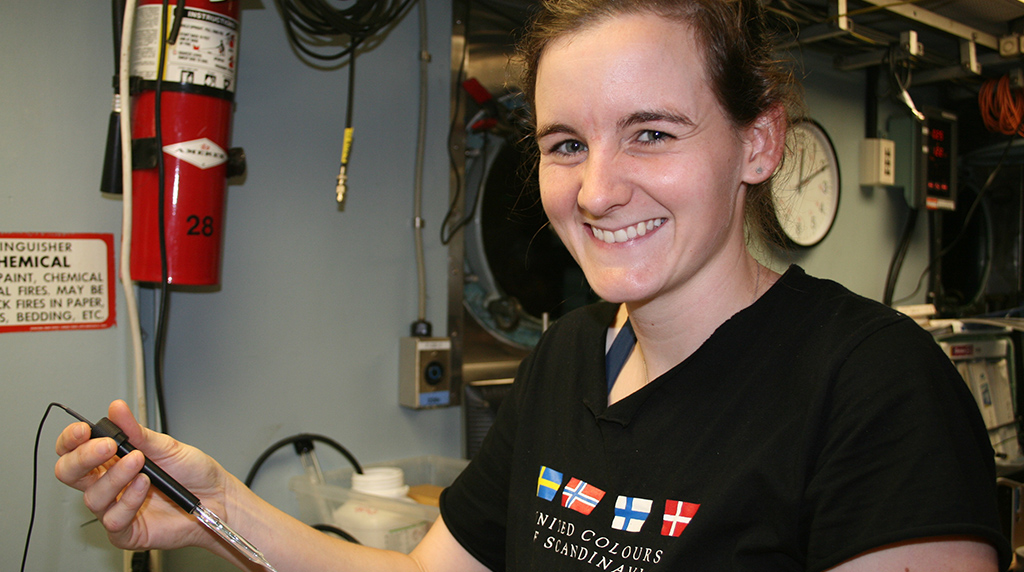
Thanks to Tropical Storm Bill, the seas have been a bit higher these past few days. Though we were sometimes able to brave the waves to get equipment over the sides of the ship - and then begin the seemingly fruitless attempt to dry off our shoes between casts- there were also some periods where we were stuck inside. Today was our first day of renewed intensive sampling, now with a refreshed science party that has had the chance to both finish experiments and sleep. Today's casts have included a CTD (conductivity, temperature and depth sensor), a CHIRP transect (echosounder ping that surveys depth and other factors that affect the sites we look into), a multicore, a meternet tow, a sediment trap deployment, and a MOCNESS (multiple opening/closing net and environmental sensing system) tow - all good things.
On our days stuck inside, the skies too gray and the waves too high, we had some time to sit around, color styrofoam cups, and talk science. Though everyone's projects are very interesting and involved, the few days of down time have allowed us to already begin obtaining results, whether it be from the flow cytometer, the radium filtration flow rates, the many probes, or the lachat nutrient sampler. We're very excited to now be mulling some preliminary data sets that present a comprehensive profile of the many sites we've been able to visit.
One project that is really coming together is a collaboration between UGA's Sarah Harrison ("Sarrison") and CCU's Leigha Peterson. Sarrison's brainchild, the surface water samples we obtained throughout various portions of the Taylor Energy Site, a particularly murky sort, have completed their various treatments and terminations. Sarrison is looking to see how an area impacted by both the release of oil and gas with the runoff from the Mississippi River affect microbial communities. These communities are often very resilient, as they exist in areas with constantly changing conditions and must quickly respond to alternating influx of resources. Finding love with chemistry as an undergrad at Haverford College, Sarrison's now beginning a PhD program with Dr. Mandy Joye at UGA as they begin to thoroughly profile how biological systems are able to respond to various stimuli within the Gulf.
Wednesday, June 10, 2015: EN559 Begins Again!
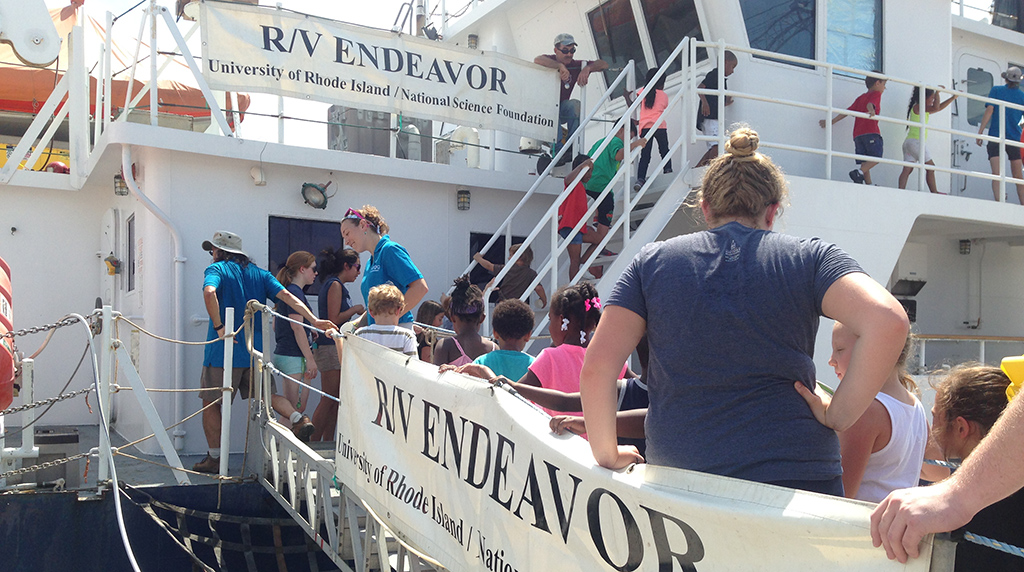
Hello, all. It's been a pretty wild week aboard the R/V Endeavor. We finished off the first leg of our cruise with a whole slew of multicores, CTD Rosette casts, and meter net tows. In order to create comprehensive profiles of the locations we've visited, everyone has been working hard to sample and experiment through the many materials we've gathered: between water filtrations and injections, free time is filled with scooping mud and slurping down some Shasta Cola.
We did have a chance to spend a day in Gulfport, MS on June 8th for World Oceans Day, and we spent the day giving tours to some groups of very motivated future scientists through the Boys and Girls Club program. After two weeks out at sea perfecting our casting and tag line skills, it was nice to show off our sea skills to such a promising group of kids. Visitors alternated between an on shore ROV activity and ship tours, loaded with questions and excited to share the day with us.
Now, we're back at sea and in the thick of things again: We've already heavily sampled the Taylor energy site and other popular seep sites in the Gulf. We're currently hunting down HOBO and getting ourselves ready for another full day of sampling starting at 0130 tomorrow morning.
Saturday, May 30, 2015: CTD, LOBOs, Sediment Traps, and Multicores Get Wet
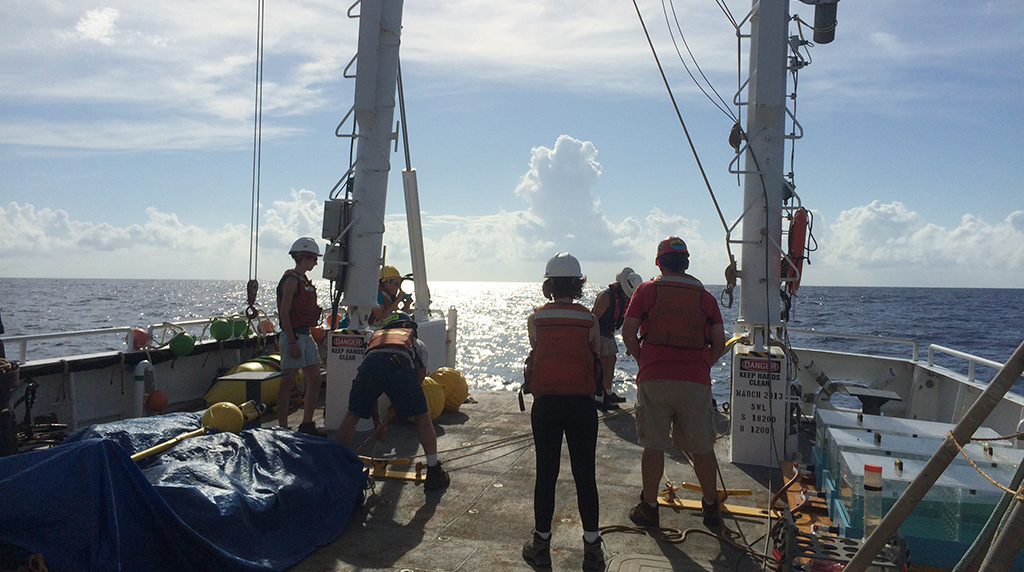
Today marked our arrival to GC600, one of the most prominent seep sites in the Northern Gulf of Mexico. Before a full day of sampling, the science party met this morning to discuss everyone's projects and goals for the cruise. The most interesting aspect of working within ECOGIG is getting to see how so many different groups can come together to make the most of water column, zooplankton, and sediment samples. Georgia Tech, University of Georgia, Coastal Carolina University, Florida State University, and Columbia University are all represented here on the ship - not to mention the many other ECOGIG contributors working behind the scenes back on land.
We filled the day with a deep CTD Rosette cast (a CTD measures conductivity, temperature and depth in the water column and the rosette of bottles takes discrete samples from the water column), a LOBOs deployment (one of the APEX, Autonomous Profiling Explorer, floats), a spectroradiometer cast (an instrument that measures light penetration and distribution in the water column), and a sediment trap deployment (traps that capture suspended particles in the water column at specific depths). Now, as the water column folks process through their samples, the night is devoted to sending down the multicorer (an instrument that takes several samples of the sediment at one time) as many times as is needed for the mud folks to get all they need.
Friday, May 29, 2015: A Great Start
This morning, we pulled up the gangway in Gulfport and returned back out into open water. Most work so far has been to further the setup of our equipment, now with the help of the additional science crew that joined on in Mississippi. Today’s setup, putting things in their final or near final homes on the ship, was interspersed with a devious plot to celebrate Sarah Weber’s birthday. This marks Sarah’s third birthday on board a science cruise, and we decided to make it special with assorted bandanas, flash tattoos, lactose free German chocolate cake, and a piñata hung from the A-frame.
With that out of the way, we’ve begun our first shakedown casts of the multicorer (an instrument that takes several samples of the sediment at one time) and CTD rosette (a CTD measures conductivity, temperature and depth in the water column and the rosette of bottles takes discrete samples from the water column). The goal is to make it to GC600 by tomorrow, a prominent oil seep site in the Northern Gulf.
Everyone’s settling in and figuring things out. Wish us luck.
Wednesday, May 27, 2015: Around Florida and Back on Land
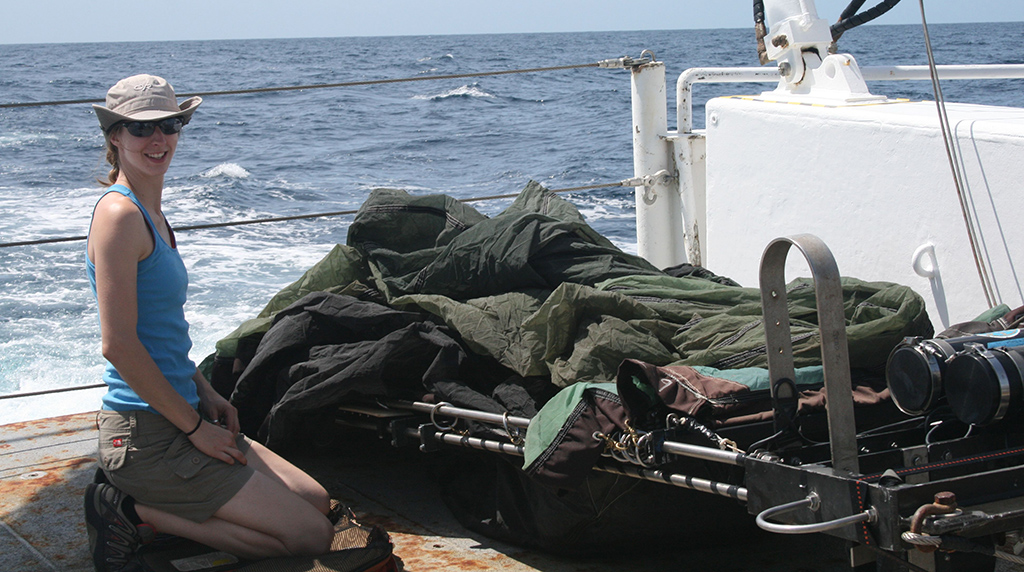
Now Gulf side, we've all been continuing on much in the same way: The science party continues to set up and the ship's crew continue to aid us in any way possible. We stayed snug against Florida for some time while still on the Atlantic coast, trying to avoid the Gulf Stream, so close in fact that we got to watch the sunset over Miami and call home with cell service. Soon enough, we will be stepping on good ol' Gulfport, Mississippi.
The past few days, the ship has been transformed. The science party has continued to rig up what will become the cruise's experiments and today the last of the clutter (mostly boxes made empty by our set up) will be left on land. We've finished set up with the lachat nutrient sampler (an instrument that allows us to analyze nutrient concentrations in seawater samples) and begun to test some standards, so many of us are already very excited for the extra elbow room.
Out on deck, we've finished making and lacquering what will become extra flooring and incubation stands and the deck plan will be finalized once we reach port. The Multiple Opening/Closing Net and Environmental Sampling System (MOCNESS) and multicorer (what we use to pick up sediment/mud) are currently very snug, but will be in their final places once we can take off some boxes and bring on the mud van.
With so much already placed and secured before even reaching Gulfport, we feel we are in very good shape.
Yesterday, we got a chance to test out the MOCNESS and get it in the water. Everything went smoothly and the cod ends are now organized by ROYGBV (rainbow) coloring.
Saturday, May 23, 2015: Gulf Stream Waters
The crew put it off for as long as possible, but our route has finally brought us into the Gulf Stream. The somewhat rough ride has been tough on a few of the crew, and a few lunches have already been lost. Besides this, the waters are clear and things are going well. The labs are continuing to be set up and cleared as things are taking shape. We're excited to get some down time and run some standards before we have to put all the equipment to use.
A bonus of the high waves, some of us spotted dolphins surfing along the wake of the ship. They stuck around for a few minutes but were apparently unimpressed with our lot. They've likely moved on to bluer pastures but we're all still keeping a lookout.
We've made it to Florida and are continuing our southward chug to port. There aren't any new photos for today, but just picture a lot of blue, a lot of equipment strapped down with bungees, and a lot of spray.
New tip of the day: Seasickness getting you down? Get out on deck and keep your eyes on the horizon. Various science and crew also swear by soda, ginger chews, coffee, water, bananas, and more work.
Longitude: 30˚ 11.78' N
Latitude: 80˚ 11.23' W
23:52 zulu time
Friday, May 22, 2015: On Our Way!
Currently a science party of 10, we’ve taken off from Morehead City, North Carolina and are en route to Gulfport, Mississippi.
Last night, most of the gang went out to the Ruddy Duck, for any of you North Carolina vacation fans, and spent some time on their patio right on the water. We spent the morning unloading our trucks filled with science equipment onto the ship, and now most of the available space is filled up throughout the labs. We’re hoping the transport to Gulf Port will give us ample time to get our gear set up and prepare for even more of the science crew once they meet us Gulf side.
With equipment safely stowed and the seas bright and calm, most everyone got a moment to look off starboard bow and watch as we made our way out to open waters. It’s been a few hours into the transit, and the waters have only gotten bluer and brighter.
So far, we’ve taken our ship safety tour, tried on some immersion suits, started to become accustomed to the ship’s diet schedule, and started unpacking the fixings for our various experiments. I’m currently typing this being full of pound cake and chocolate pudding, as Mike Sr. and Mike Jr., the ship’s steward and his son who run the kitchen, are keeping me incredibly well fed.
We’re all hopeful for a wonderful cruise, as months of planning finally start to come together aboard the R/V Endeavor.
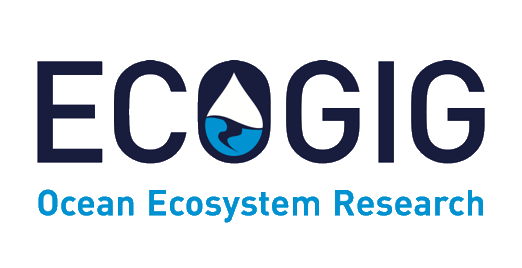
















 back to top
back to top